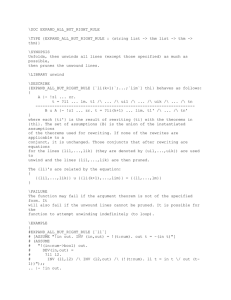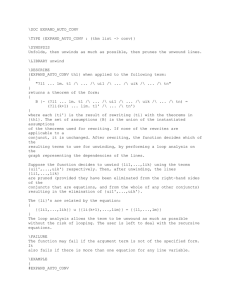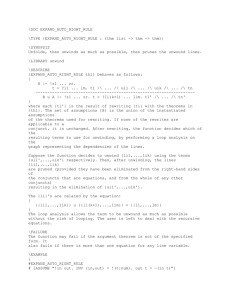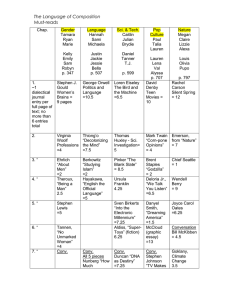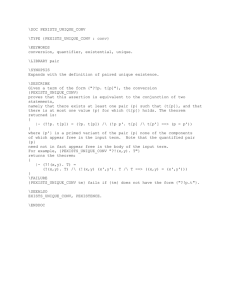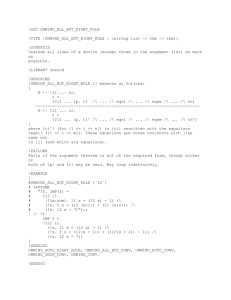EXPAND_ALL_BUT_CONV.doc
advertisement
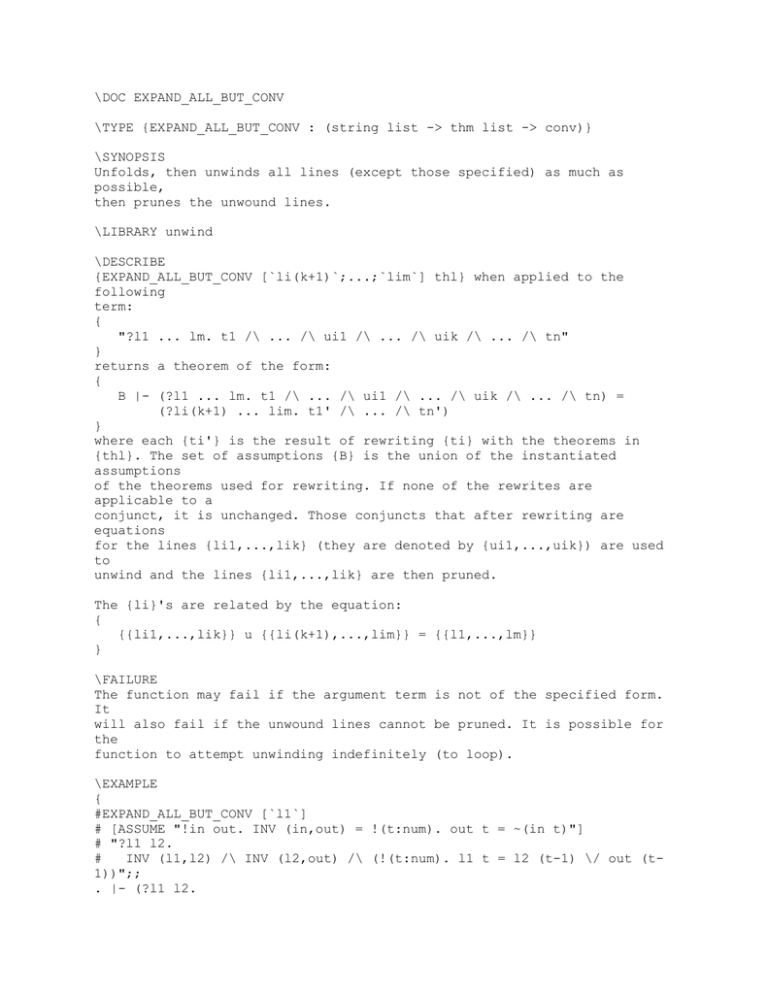
\DOC EXPAND_ALL_BUT_CONV
\TYPE {EXPAND_ALL_BUT_CONV : (string list -> thm list -> conv)}
\SYNOPSIS
Unfolds, then unwinds all lines (except those specified) as much as
possible,
then prunes the unwound lines.
\LIBRARY unwind
\DESCRIBE
{EXPAND_ALL_BUT_CONV [`li(k+1)`;...;`lim`] thl} when applied to the
following
term:
{
"?l1 ... lm. t1 /\ ... /\ ui1 /\ ... /\ uik /\ ... /\ tn"
}
returns a theorem of the form:
{
B |- (?l1 ... lm. t1 /\ ... /\ ui1 /\ ... /\ uik /\ ... /\ tn) =
(?li(k+1) ... lim. t1' /\ ... /\ tn')
}
where each {ti'} is the result of rewriting {ti} with the theorems in
{thl}. The set of assumptions {B} is the union of the instantiated
assumptions
of the theorems used for rewriting. If none of the rewrites are
applicable to a
conjunct, it is unchanged. Those conjuncts that after rewriting are
equations
for the lines {li1,...,lik} (they are denoted by {ui1,...,uik}) are used
to
unwind and the lines {li1,...,lik} are then pruned.
The {li}'s are related by the equation:
{
{{li1,...,lik}} u {{li(k+1),...,lim}} = {{l1,...,lm}}
}
\FAILURE
The function may fail if the argument term is not of the specified form.
It
will also fail if the unwound lines cannot be pruned. It is possible for
the
function to attempt unwinding indefinitely (to loop).
\EXAMPLE
{
#EXPAND_ALL_BUT_CONV [`l1`]
# [ASSUME "!in out. INV (in,out) = !(t:num). out t = ~(in t)"]
# "?l1 l2.
#
INV (l1,l2) /\ INV (l2,out) /\ (!(t:num). l1 t = l2 (t-1) \/ out (t1))";;
. |- (?l1 l2.
INV(l1,l2) /\ INV(l2,out) /\ (!t. l1 t = l2(t - 1) \/ out(t - 1)))
=
(?l1.
(!t. out t = ~~l1 t) /\ (!t. l1 t = ~l1(t - 1) \/ ~~l1(t - 1)))
}
\SEEALSO
EXPAND_AUTO_CONV, EXPAND_ALL_BUT_RIGHT_RULE, EXPAND_AUTO_RIGHT_RULE,
UNFOLD_CONV, UNWIND_ALL_BUT_CONV, PRUNE_SOME_CONV.
\ENDDOC
